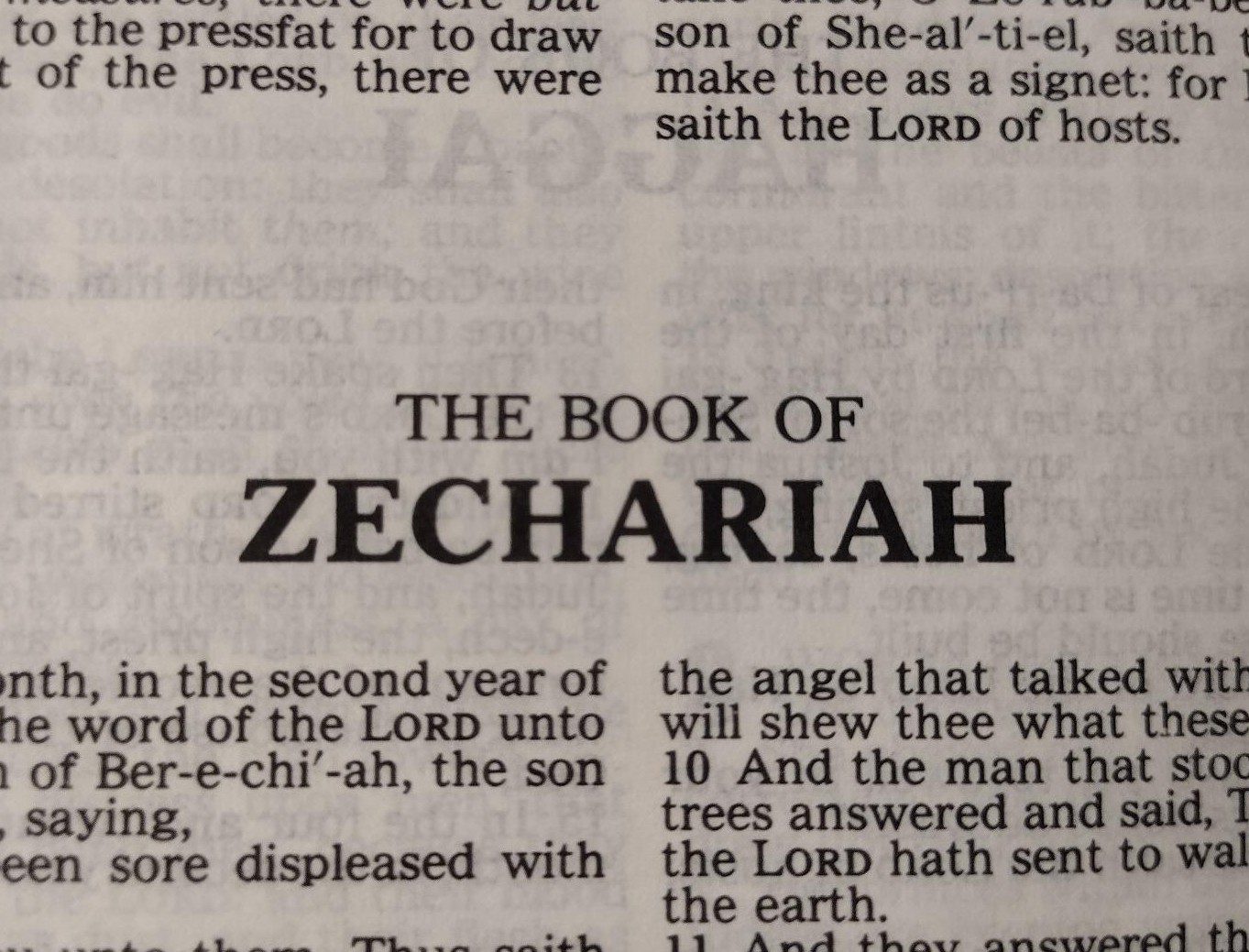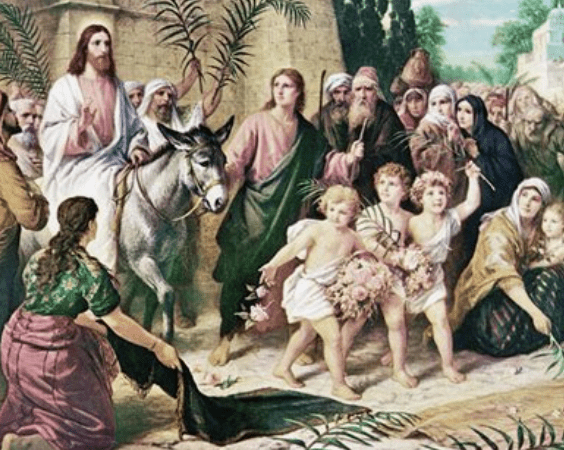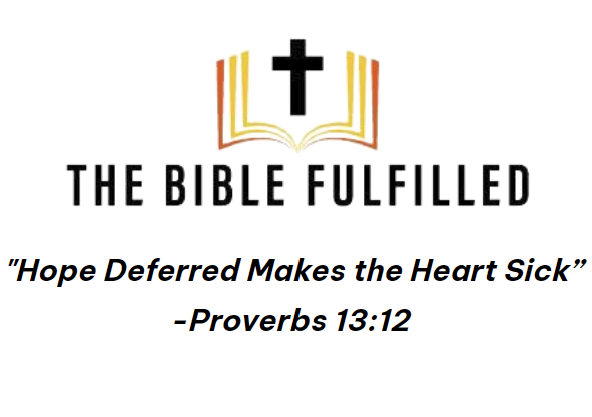Zechariah 9–14

Zechariah 9–14 is another Old Testament prophecy that was fulfilled in the first century. Zechariah linked the events of this prophecy to a specific time period or generation by the repeated use of the term “in that day†(Zech. 9:16; 12:3, 4, 6, 8, 9, 11; 13:1, 2, 4; 14:6, 8, 9, 13). And the New Testament writers said that “day†came to pass in the first century! Compare the events that Zechariah said would happen “in that day†to the events that Jesus and the apostles said were happening in their day:
“Behold, your King is coming to you; He is just and having salvation, lowly and riding on a donkey†(Zech. 9:9)
Fulfillment: Jesus brought salvation to the world in the first century (2 Tim. 1:10). He came to earth in humility (Phil. 2:8), riding on a donkey (Mark 11:1–10). A donkey is a symbol of humility and peace.

“From him [the Lord] comes the cornerstone†(Zech. 10:4)
Fulfillment: Jesus, the cornerstone, came in the first century: “The stone that the builders rejected has now become the cornerstone†(1 Pet. 2:7).
“Open your doors, O Lebanon, that fire may devour your cedars. Wail, O cypress, for the cedar has fallen, because the mighty trees are ruined†(Zech. 11:1)
Fulfillment: This almost certainly refers to the fiery destruction of the temple in AD 70. First, notice the references to “Lebanon†and “cedar.†The temple was built out of cedar (1 Kings 5:6, 7:1; 2 Chron. 2:3) from the forests of Lebanon (1 Kings 7:1; 2 Chron. 2:8, 16). Second, notice Zechariah’s reference to fire: “fire will devour the cedars.†This is exactly how the temple was destroyed in AD 70, per the first century historian Josephus.
“I [God] will not feed you. Let what is dying die, and what is perishing perish. Let those that are left eat each other’s flesh†(Zech. 11:9)
Fulfillment: During the Jewish-Roman War of AD 67–70, the Romans surrounded Jerusalem until the city’s food supply ran out. Josephus described one resident so desperate for food that she killed, cooked, and ate her own baby:
“A lady of rank and fortune, Mary, the daughter of Eleazar, had been obliged to…take refuge in Jerusalem. The insurgents had stripped her house of every article of food, and left her and her infant child to starve. As the armed brigands passed by her door they inhaled the fumes of her kitchen, and rushed into the house, and threatened death unless the savoury viands were disclosed. She led them aside and showed them, to their horror, the remains of her child. Maddened by the cravings of nature, she had murdered the infant at her breast and cooked it for food![1]
“And I took my staff, Beauty, and cut it in two, that I might break the covenant which I had made with all the peoples†(Zech. 11:10)
Fulfillment: God officially broke his covenant (the Mosaic covenant) in AD 70. The writer of Hebrews said in AD 62/63: “In that He says, ‘A new covenant,’ He has made the first [covenant] obsolete. Now what is becoming obsolete and growing old is ready to vanish away†(Heb. 8:13). The temple was symbolic of the Old Covenant age (Heb. 9:8–9), and when the temple fell in AD 70, that meant the Old Covenant had officially ended.
“And the Lord said to me, ‘Throw it to the potter’— that princely price they set on me. So I took the thirty pieces of silver and threw them into the house of the Lord for the potter†(Zech. 11:13)

Fulfillment: Judas betrayed Jesus for thirty pieces of silver (Matt. 26:15). Judas later became overcome with grief and threw the money back at the Jewish leaders, who purchased a potter’s field with it (Matt. 27:3–10).
“Behold, I will make Jerusalem a cup of drunkenness to all the surrounding peoples, when they lay siege against Judah and Jerusalem†(Zech. 12:2)
Fulfillment: The Roman Empire laid siege against Judah and Jerusalem in the Jewish-Roman War of AD 67–70.
“Then they will look on Me whom they pierced. Yes, they will mourn for Him as one mourns for his only son, and grieve for Him as one grieves for a firstborn. In that day there shall be a great mourning in Jerusalem, like the mourning at Hadad Rimmon in the plain of Megiddo†(Zech. 12:10–11)
Fulfillment: The first part of this verse likely refers to Jesus’s crucifixion in AD 33. In fact, John quoted this passage word for word: “They shall look on Him whom they pierced†(John 19:37).
However, Zechariah 12:10–11 is also likely referring to Jesus’s second coming in AD 70. Compare the references to “piercing†and “mourning†and “Megiddo†to Revelation’s description of the second coming: “Behold, He is coming with clouds, and every eye will see Him, even they who pierced Him. And all the tribes of the earth will mourn because of Him†(Rev. 1:7, bolding mine). Keep in mind, Revelation was written around AD 65, and this event had not happened yet!
Revelation goes on to describe the great battle of Armageddon (Megiddo) between God and his enemies: “And they gathered them together to the place called in Hebrew, Armageddon†(Rev. 16:16). Notice, also, that the author of Revelation said (in AD 65) this prophecy would happen soon (1:1–3, 22:6–10), which fits perfectly with the Jewish-Roman War of AD 67–70. This war caused great mourning among the tribes of Israel. In fact, Jews today still mourn over this event at the Wailing Wall!
Jesus had also prophesied about this event in the Olivet Discourse (in AD 33): “All the tribes of the earth will mourn, and they will see the Son of Man coming on the clouds of heaven with power and great glory†(Matt. 24:30, bolding mine). And Jesus, too, had said it would happen within a generation or by AD 70. Same cloud coming. Same mourning. Same timing (as in Revelation)—because it’s the same event!
“Strike the Shepherd, and the sheep will be scattered†(Zech. 13:7)
Fulfillment: Jesus quoted this passage on the night of his arrest: “All of you [disciples] will be made to stumble because of Me this night, for it is written: ‘I will strike the Shepherd, And the sheep of the flock will be scattered’†(Matt. 26:31).
“‘And it shall come to pass in all the land,’ Says the Lord, ‘that two-thirds in it shall be cut off and die…I will bring the one-third through the fire’†(Zech. 13:8–9)
Fulfillment: This is an obvious reference to the second coming. According to Josephus, 1.1 million Jews (“two-thirdsâ€) perished during the First Jewish-Roman War in AD 67–70. Yet the Christians (“one-thirdâ€) avoided this bloodshed by heeding Jesus’s warning to flee Jerusalem when they saw the Roman armies surrounding it (Luke 21:20–21). Notable Bible scholar Adam Clarke commented about this event:
“It is very remarkable that not a single Christian perished in the destruction of Jerusalem, though there were many there when Cestius Gallus invested the city…All who believed in Christ left Jerusalem and fled to Pella, and other places beyond the river Jordan; and so they all marvelously escaped the general shipwreck of their country: not one of them perished.â€[2]
“Behold, the day of the Lord is coming, and your spoil will be divided in our midst. For I will gather all the nations to battle against Jerusalem; the city shall be taken†(Zech. 14:1–2)
Fulfillment: The nations of the Roman Empire gathered against Jerusalem in the Jewish-Roman War of AD 67–70. Back in AD 33, Jesus had warned: “But when you see Jerusalem surrounded by armies, then know that its desolation is near…For these are the days of vengeance, that all things which are written may be fulfilled…Then they will see the Son of Man coming in a cloud with power and great glory…Assuredly, I say to you, this generation will by no means pass away till all things take place†(Luke 21:20–32).
This event happened by AD 70.
“And in that day it shall be that living waters shall flow from Jerusalem†(Zech. 14:8)
Fulfillment: Jesus said, “If anyone thirsts, let him come to Me and drink. He who believes in Me, as the Scripture has said, out of his heart will flow rivers of living water†(John 7:37–38).
Moreover, the apostles referred to the church as the new Jerusalem: “But you [Christians] have come to Mount Zion and to the city of the living God, the heavenly Jerusalem, to an innumerable company of angels, to the general assembly and church of the firstborn†(Heb. 12:22–23).
Revelation, too, mentions the New Jerusalem coming down from heaven (Rev. 21:2), with rivers of living water (Rev. 22:2). And by the time Revelation was written in AD 65, it was on the verge of happening: “Do not seal [set aside] the words of the prophecy of this book, for the time is at hand†(Rev. 22:10).
Conclusion:
The New Testament writers affirm that Zechariah 9-14 was fulfilled in the first century. The following two passages capture beautifully the sentiment of this era (AD 30–70):
“For these are the days of vengeance, that all things which are written [in the Old Testament] may be fulfilled†(Luke 21:21)
“All the prophets, from Samuel and those who follow, as many as have spoken, have also foretold these days†(Acts. 3:24).
For more about the topics discussed in the article, get my book The End Is Here: How the New Testament’s Prophecies Were Fulfilled.
By Alex Polyak, Director of The Bible Fulfilled, 9/13/24
[1] Thomas Lewin, Esq., The Siege of Jerusalem by Titus, 67.
[2] Adam Clarke, “Commentary on the Bible, Matthew Chapter 24,†Internet Sacred Text Archive, viewed Jan. 18, 2022, https://www.sacred-texts.com/bib/cmt/clarke/ mat024.htm
